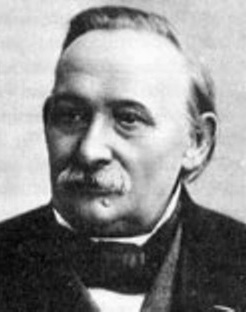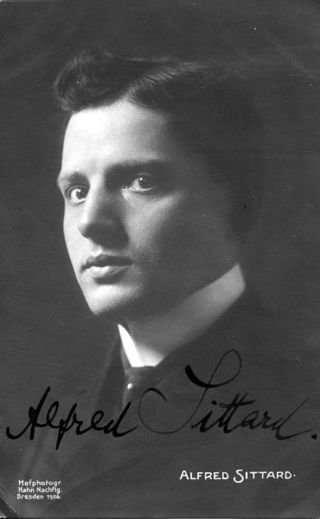
The Piano Concerto in A minor, Op. 54, by the German Romantic composer Robert Schumann was completed in 1845 and is the composer's only piano concerto. The complete work was premiered in Dresden on 4 December 1845. It is one of the most widely performed and recorded piano concertos from the Romantic period.

The Symphony No. 6 in B minor, Op. 74, also known as the Pathétique Symphony, is Pyotr Ilyich Tchaikovsky's final completed symphony, written between February and the end of August 1893. The composer entitled the work "The Passionate Symphony", employing a Russian word, Патетическая (Pateticheskaya), meaning "passionate" or "emotional", which was then translated into French as pathétique, meaning "solemn" or "emotive".

Carnaval, Op. 9, is a work by Robert Schumann for piano solo, written in 1834–1835 and subtitled Scènes mignonnes sur quatre notes. It consists of 21 short pieces representing masked revelers at Carnival, a festival before Lent. Schumann gives musical expression to himself, his friends and colleagues, and characters from improvised Italian comedy. He dedicated the work to the violinist Karol Lipiński.

The Symphonic Studies, Op. 13, is a set of études for solo piano by Robert Schumann. It began in 1834 as a theme and sixteen variations on a theme by Baron von Fricken, plus a further variation on an entirely different theme by Heinrich Marschner.

Franz Schubert wrote his Sonata in C major for piano four-hands, D 812, in June 1824 during his second stay at the Esterházy estate in Želiezovce. The extended work, in four movements, has a performance time of around 40 to 45 minutes. It was published as Grand Duo, Op. 140, in 1837, nine years after the composer's death.

The State University of Music and Performing Arts Stuttgart is a professional school for musicians and performing artists in Stuttgart, Germany. Founded in 1857, it is one of the oldest schools of its kind in Germany.

Felix Mendelssohn's Piano Trio No. 1 in D minor, Op. 49, was completed on 23 September 1839 and published the following year. The work is scored for a standard piano trio consisting of violin, cello and piano. It is one of Mendelssohn's most popular chamber works and is recognized as one of his greatest along with his Octet, Op. 20. During the initial composition of the work, Mendelssohn took the advice of fellow composer Ferdinand Hiller to revise the piano part. Hiller wrote, "with his usual conscientious earnestness when once he had made up his mind, he undertook the length and rewrite the whole pianoforte part."
Musical quotation is the practice of directly quoting another work in a new composition. The quotation may be from the same composer's work (self-referential), or from a different composer's work (appropriation).

Jörg Widmann is a German composer, conductor and clarinetist. In 2023, Widmann was the third most performed living contemporary composer in the world. Formerly a clarinet and composition professor at the University of Music Freiburg, he is composition professor at the Barenboim–Said Akademie. His most important compositions are the concert overture Con brio, the opera Babylon, an oratorio Arche, Viola Concerto, Kantate and the trumpet concerto Towards Paradise. Widmann has written musical tributes to Classical and Romantic composers. He was awarded the Bavarian Maximilian Order for Science and Art in 2018 and the Bach Prize of the Free and Hanseatic City of Hamburg in 2023. He was Gewandhaus Composer of the Gewandhaus Orchester Leipzig and Composer in Residence for the Berlin Philharmonic.

The Piano Quartet in E♭ major, Op. 47, was composed by Robert Schumann in 1842 for piano, violin, viola and cello. Written during a productive period in which he produced several large-scale chamber music works, it has been described as the "creative double" of his Piano Quintet, finished weeks earlier. Though dedicated to the Russian cellist Mathieu Wielhorsky, it was written with Schumann's wife Clara in mind, who would be the pianist at the premiere on 8 December 1844 in Leipzig.
The Signum Quartet is a string quartet based in Bremen, Germany. Founded in 1994, it has been playing in the current formation since 2016.

Carolin Widmann is a German classical violinist. She focuses on contemporary music. Widmann plays a violin made in 1782 by Giovanni Battista Guadagnini.

Franz Theodor Magnus Böhme was a German academic, musicologist, composer, folksong collector and writer on music history and folksong.
Ragna Schirmer is a German classical pianist and academic teacher. She is focused on the music of Johann Sebastian Bach, and won the International Johann Sebastian Bach Competition twice.

Alfred Sittard was a German cantor, composer of church music and one of the most important organists of his time.
Tatjana Masurenko is a German violist of Russian descent.
Christian Kluttig is a German conductor, pianist and Hochschullehrer. From 1979 to 1990, he was chief conductor of the Orchester des Opernhauses Halle. Appointed General Music Director in 1983, he worked as such at the theatres in Halle (Saale) and Theater Koblenz. The Handel interpreter rendered special services to the implementation of Historically informed performance in the Saale city, which made him one of the most important protagonists in this field in the GDR. He also devoted himself to Neue Musik, premiering Reiner Bredemeyer's opera Candide.

Klamer Eberhard Karl Schmidt was a jurist and a popular German poet-lyricist.
Fritz Böhme was a German dance publicist and cultural journalist.













